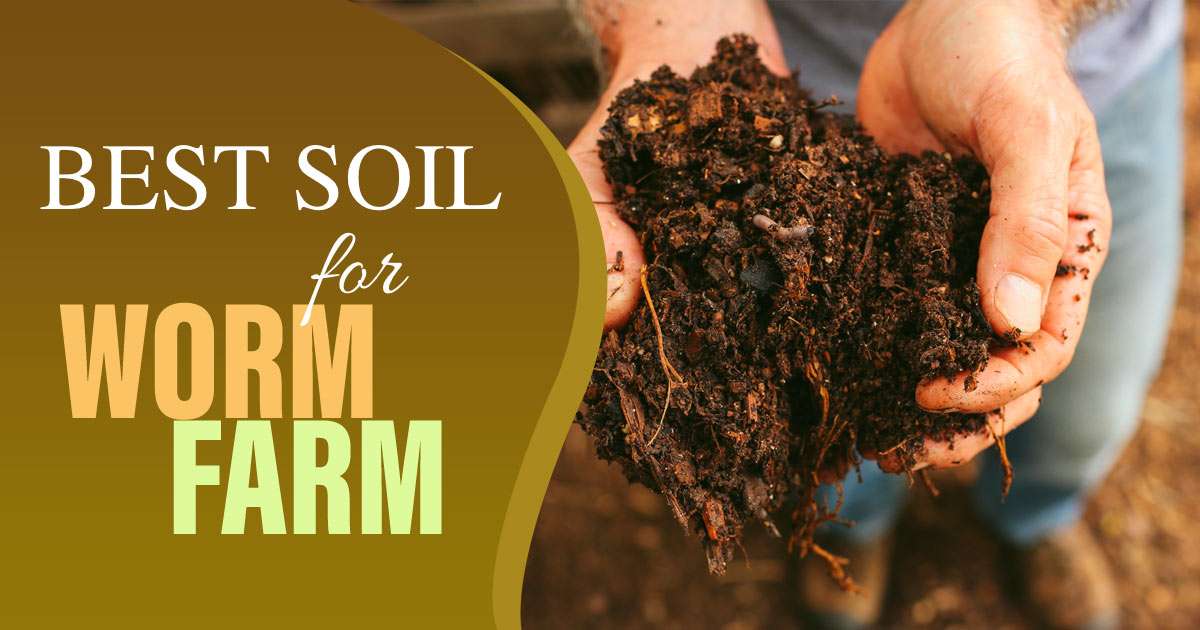Guide to Choosing the Best Soil and Bedding for Your Worm Farm

Farming, as we all know, is an essential activity that offers us a multitude of benefits. It provides us with food, helps in preserving our environment, creates employment opportunities, and even plays a significant role in supporting rural and urban economies. But did you know there’s a type of farming that might not be on your radar, yet it’s a vital part of agriculture? Yes, we’re talking about worm farming.
Worm farming, also known as vermicomposting, is the process of using worms to decompose organic food waste, turning the waste into a nutrient-rich material capable of supplying necessary nutrients to help sustain plant growth. This method is gaining popularity due to its double-barreled benefits: waste reduction and the creation of an organic medium that enriches soil.
A study published in the International Journal of Recycling of Organic Waste in Agriculture indicates that 0.50 kg of earthworms can process 0.50 kg of organic material per day (at 75–85% moisture content) and yield about 0.25 kg of vermicompost.
Now, here’s the fun part. Worm farming can be an exciting venture that yields great results when done correctly. And the secret to successful worm farming lies in one of the most crucial components: the right soil and bedding.
Understanding the Role of Bedding in Worm Farming
When we talk about ‘bedding’ in the context of worm farming, we’re referring to the environment we create for our wriggly friends. Think of it as their home—a place where they live, eat, and reproduce. Worm bedding, also known as vermicomposting bedding or worm bin bedding, is a mix of organic materials that provides a comfortable, healthy, and moist environment for worms.
So, why are good soil and bedding so important in worm farming? Well, worms are like us in many ways; they thrive in a comfortable and nutritious environment. The right bedding material is both high in carbon and also absorbent, helping to maintain the correct moisture levels. It’s also a source of food for the worms and a medium for them to move around.
A well-prepared bedding is crucial for worm reproduction and growth. It’s like providing a balanced diet and a cozy home for the worms. If we get the bedding right, the worms will do what they do best—eat our kitchen scraps and produce rich, fertile compost that’s excellent for our plants.
So, as peculiar as worm farming may sound initially, it’s a simple and effective way to recycle organic waste and enrich our soil. And it all begins with choosing the right soil and bedding.
The Best Soil and Bedding for Your Worm Farm
Creating the optimal soil and bedding for your worm farm is not as daunting as it may seem. It’s all about finding the right materials that provide a balanced diet and a comfortable living environment for your worms. So, what are some of the best choices for worm farm soil and bedding?
Shredded Newspaper or Cardboard
These are great options because they’re carbon-rich, absorbent, and easy for worms to break down. Just remember to avoid glossy paper and colored ink.
Aged Compost or Manure
These add a nutrient boost to your worm farm. Ensure that the manure comes from herbivores like cows or horses and that it’s well-aged to avoid any potential pathogens.
Coir or Peat Moss
Both are excellent at retaining moisture and providing a soft texture that worms love. Coir, made from coconut husks, is a more sustainable choice as peat moss extraction can be environmentally damaging.
Leaves or Straw
These are natural, readily available, and provide good structure for air circulation.
Aged Wood Chips or Sawdust
These can be a great addition to your worm bedding. They’re carbon-rich and break down slowly, providing a long-term food source. However, ensure they are well-aged and made from untreated wood to avoid any harmful chemicals.
Garden Soil
A small amount of garden soil can introduce beneficial microorganisms and grit needed for the worm’s digestion. But remember, only a sprinkling is needed, as too much soil can make the bedding heavy and compact.
Coffee Grounds
Worms love coffee grounds! They’re a good source of nitrogen and help to create a gritty texture that worms need for digestion. Just remember to balance them with carbon-rich materials and don’t let them form a clump.
Crushed Eggshells
Not only do eggshells provide calcium, but they also add valuable grit to the worm’s diet. Make sure they’re rinsed and crushed into a fine powder before adding them to your worm bin.
These materials can be found in your own home or garden, at local farms, or in gardening stores. Mix them together, dampen with water, and voila! You’ve got yourself some top-notch worm bedding.
Remember, the key to a successful worm farm lies in maintaining the right balance. Too much of one type of material can throw off the pH, moisture, or temperature of your worm bin. But get it right, and you’ll be on your way to creating a thriving worm farm that produces nutrient-rich compost for your garden.
Using Potting Soil for Worm Bedding: Can It Work?
The idea of using potting soil for worm bedding might seem like a natural fit at first glance. After all, worms are usually found in soil, so it would make sense to use it in a worm farm, right? However, the answer is not as simple as you might think.
While worms can technically live in potting soil, it’s not the most efficient or beneficial medium for them in a worm farming context. Potting soil can often be too heavy and dense for the worms, potentially leading to compaction issues in your worm bin. This could hinder the movement of the worms and limit the oxygen supply, impacting their health and productivity.
Additionally, potting soil may not provide the ideal nutritional balance for your worms. Worms need a mix of green (nitrogen-rich) and brown (carbon-rich) materials to thrive. While potting soil can provide some nutrients, it lacks the carbon content that other bedding materials like shredded newspaper, cardboard, or leaves can offer.
However, that doesn’t mean you can’t use potting soil at all in your worm farm. In fact, adding a small amount of garden soil or potting soil can introduce beneficial microorganisms and provide grit that aids in worm digestion. The key is to use it sparingly and in combination with other bedding materials.
The Benefits of Embracing Vermicomposting
As we conclude our exploration into the fascinating world of worm farming, it’s important to remember why this practice holds such value. Vermicomposting may seem like a simple process, but the benefits it brings to the table can be substantial.
Firstly, worm farming is an excellent way to create nutrient-rich compost. The ‘black gold’ produced by your hardworking worms is a powerful natural fertilizer that can boost your garden’s health and productivity.
Secondly, vermicomposting serves as an effective method of waste reduction. By turning your kitchen scraps into food for worms, you’re not only reducing waste but also contributing to a more sustainable lifestyle.
Thirdly, worm castings improve soil structure. They help enhance the soil’s ability to retain water and nutrients, leading to healthier and more robust plants.
Finally, there’s an educational aspect to worm farming too. It offers a practical, hands-on way to learn about ecology, waste management, and the importance of recycling.
In essence, worm farming or vermicomposting, is a rewarding activity with multiple benefits. It demonstrates how even tiny creatures like worms can play a significant role in our ecosystem. So, here’s to the wonders of worm farming and the many rewards it brings!

